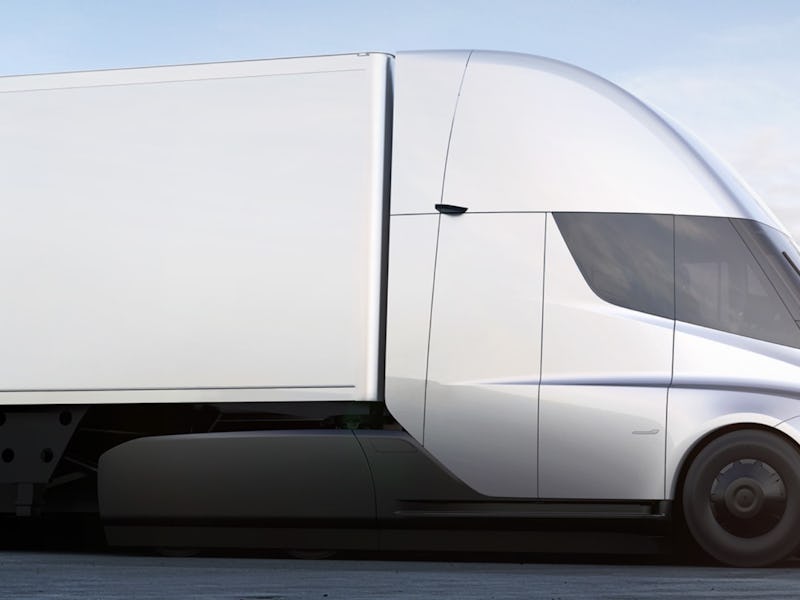The Tesla Semi is already impressive based on released specifications, but Elon Musk has hinted the all-electric truck could receive an upgrade before launch. The CEO told investors during the company’s fourth quarter earnings call on Wednesday that Tesla’s foray into trucking, set to hit roads in 2019, will reach high manufacturing rates and offer buyers better bang from their truck.
“I think we might be able to exceed the specs we unveiled last year too, which is pretty exciting,” Musk said. “And there was speculation that we wouldn’t meet them. I think we’re going to exceed them.”
Sign up for “Musk Reads,” our weekly newsletter.
It’s exciting news for the future after a disappointing earnings report, which saw the company post its biggest loss ever of $675 million. The Semi truck has already caught the attention of delivery firms like DHL and PepsiCo, the latter of which has ordered 100 of the trucks. The truck is capable of acceleration times of 0 to 60 miles per hour in just five seconds. A model with a 500-mile range per charge will retail for $180,000, and a network of solar-powered “megachargers” placed every 400 miles will charge the truck in just half an hour.
Musk went on to explain that the truck, unveiled at the Tesla Design Studio in November 2017, would see production increases along an S-curve. This means production starts by increasing slowly, then jumps up in rate and tapers off at the end, making it easier to predict the endpoint than the increase rate.
“Four years, I think 100,000 units a year is a reasonable expectation,” Musk said. “Maybe more, but that’s roughly the right number I think.”
Watch the Tesla Semi unveiling below:
Tesla has been burned before by trying to predict the early stages of production. Musk famously referred to the start point of Tesla Model 3’s S-curve as “production hell” when the company started manufacturing in June 2017. Its predictions for early production rates were far lower in practice: 2,425 in the fourth quarter, where Tesla previously predicted 20,000 per month in December.
Musk is correct that skepticism existed around the truck prior to its unveiling. Nikola Motors, which is developing a hydrogen-powered alternative, told Inverse that the Semi would be “very bad for Tesla’s balance sheet,” while two researchers from Carnegie Mellon University suggested the Semi would have low range and a high price. The unveiled product is a step more expensive than a diesel truck, which retails for around $120,000 on average, but Tesla touts fuel savings as a reason to switch.
Tesla’s not waiting around to get its reinvention out onto the streets. A prototype model was already spotted last month gliding silently down the streets of Sunnyvale, California.
